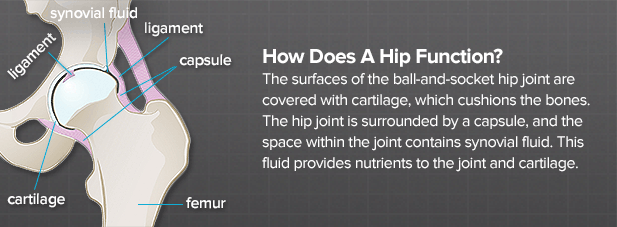
A healthy hip joint consists of the thigh bone (femur), femoral head, acetabulum, tendons, ligaments and cartilage.
Ligaments function like elastic bands—they keep the bones in place while the muscles around the joint lengthen and shorten, causing it to move. The surfaces of the ball-and-socket (femoral head and acetabulum) joint are covered with articular cartilage, which cushions the bones and enables them to glide easily against each other. The hip joint is surrounded by a capsule, and the space within the joint (joint cavity) contains synovial fluid. This fluid, which provides nutrients to the joint and cartilage, is produced by the synovial membrane (or synovium), which lines the joint cavity. In a healthy hip, this membrane makes a small amount of fluid that lubricates and almost completely eliminates friction in the hip joint.
Ideally, all of these parts of the hip work in harmony, allowing the joint to move easily and without pain, thus preventing hip problems. Hip strengthening exercise can help to ensure your hips remain strong and healthy.